(15:50) In Jasper, I worked for a short time in the winters in resource conservation and I did bear management for one year. I managed, with big help from Bob Baxter, and several the local Jasperites … we got the sealed bear containers installed in Jasper townsite. George Balding was the superintendent at the time and he managed to get us funding to do the entire town – it really did revolutionize bear management in Jasper. There were periods there like in most parks, especially in ones that have communities, where there were bears in the alleys regularly and all kinds of other wildlife too, coyotes, stray dogs, and ravens picking at the garbage. The installation of those containers with the agreement and legal arrangement with the local landowners just changed that almost overnight. It was great. The only problem was I got myself in kind of hot water with George, because I gave a talk to NAIT. The NAIT students were out for their annual field trip and I pointed out some of the problems we were continuing to have with bear management. One of them actually…the drug at the time that we were using was called anectine. It was a very poorly utilized drug in the sense that you had to guess the weight of the animal and that was relative to the time that the animal would be mobilized and it was a difficult thing, especially to do in a field situation. A lot of people have trouble estimating, myself included, estimating weights in an accurate way so that we didn’t end up killing some of these bears. I remember when I first got there, I was quite upset at the number of bears that were just being put down almost on purpose by using too much anectine. Even though the idea of relocating them was proven to be not a very successful manner either. Even in a park as large as Jasper, it was difficult to successfully relocate bears in the backcountry because they usually come back to the food source. I think the installation of this garbage containment was long overdue, as you probably know there were periods – and I can remember as a kid actually going up to Banff and going to the dump to watch the bears. That carried on for a number of decades before parks got serious about the garbage problem and trying to wean the bears off it.
(18:44) I also had a few experiences in Jasper with grizzly bears at the dump. We had a regular migration of grizzly bears crossed the river and came into the fenced dump at Jasper. I remember it was kind of funny because the dump master was kind of a crotchety old character. I went out to check the electric fencing one day and asked him to shut off the electricity while I checked the connections on the insulators and area around the fence. For whatever reason, he turned it back on while I was still checking them. So I got myself a pretty good shock! I wasn’t too pleased with him. He was all wound up while I was doing this, and claimed the bears were going to get under the fence. The whole bear thing of course is a fabulous story and I am sure most people are aware of the evolution of bear management and it has got to a point now where other than the train track problems with the grizzly bears, it is pretty well managed.
(19:58) So I started at Pocahontas when I first moved there and then I was quickly moved from there to Mile 45/Sunwapta. They immediately sent me right into the Brazeau backcountry, because the reason I wanted to go to Jasper was, as I said before, primarily for the backcountry. They had a policy in those days that new people who came on, especially as a permanent warden you didn’t get to go to the backcountry. They just sent seasonal people there. I was upset about that and went to Bob about it and he said, “Well, we will make an exception in your case and allow you to do it.” Like I say I did it for several years there and worked with a bunch of younger fellows and had a great experience. Lots of great experiences out there. . . .
(20:57) We had a few episodes with a fellow named Trapper Bill. He used to be a kind of recluse that was on the edge of the park on the Brazeau River. He was on medications, and was a bit of a character! I remember the spring bear hunts we would be sent down to the Brazeau for a two week period just on foot, but we’d be hiking the river and you always had to be careful when you went into his camp because he had a couple of old muskets there that he would likely grab (and use), at the sight of anything. Luckily, I had a dog named Partner at the time and sent the dog into the camp first so he (Trapper Bill), knew, I was nearby – we hollered to make sure he was aware of it. I remember Wes Bradford and I doing quite a few patrols down through there. Bill was eccentric enough that when he ran out of his medication, he actually broke into the Issac Creek cabin one time and used the SSB radio. So we flew down to get him to help him out. He used to have people who would bring in medication via snow machine various times in the winter, and for whatever reason they hadn’t gotten them to him. Like I said he had some issues there, so when he didn’t have his medication he got kind of erratic to say the least. I remember flying in there though with Wes and Garry Forman, the owner of Yellowhead helicopters, – Garry was pretty nervous with having this guy in the helicopter you know because he could do anything. Luckily nothing really happened and we got him out to get his medication. He did this for years, he lived in there and it was a little dirt floor shack. I often wondered about the coffee that we got fed there, you know! We politely drank it and told stories – he would tell us about any activity in the park boundary area so it was good actually. Again there was quite a bit of hunting on that Brazeau River…and he seemed to know who was around and what was happening, because he was trapping there as well.
(23:28) The other thing that I really enjoyed about Jasper was that I moved from Sunwapta to town for a short time, then back over to Pocahontas. I spent 10 years in total there, and I got a chance to work with Alberta Fish and Wildlife a lot there because the eastern portion of the park is adjacent to provincial land. There was a lot of work at that time with adjacent agencies particularly Fish and Wildlife. So I would take horses, outside the park, – we would ride up into the basins that (hunters) who were primarily hunting sheep and elk in the areas adjacent to the park. Then at the same time, I would be able to use Fish & Wildlife machines to get back and forth to some of these areas. We had a really good relationship – special thanks to Bill Cruthers, at Alberta Fish & Wildlife, for his friendship, and many years of joint, year -round, patrol coverage up and around the Fiddle valley. There are active trap lines right up against the park which we jointly checked. A guy named Bowdenchuck and some of these other folks that trapped right up to the park boundary Randy Babella and Bill Gosney did annual sheep hunting at the Mystery Lake boundary. There was a good reason to work in the backcountry year round. I can’t believe it now that they don’t have anyone in the area in the wintertime. Parks has gone to a summer seasonal warden at Pocahontas. That place has lots of ATV access just generally, and if you are not around that could be a concern. It certainly was, and is still nowadays. I ran into a few instances there with sheep being shot right on the boundary and close to it. A number of the outfitters there I’ve worked with. It was a great learning experience for me to learn a lot more about how outfitters take people out on sheep hunts and have a lot of knowledge of both the park and certainly the area that they are hunting in. That still continues, but with very little surveillance on behalf of parks, so I am not too sure that is progress, but hopefully parks will see the errors of their ways, and get back to a little more presence in the backcountry and areas adjacent the park boundary.
I met my eventual wife Sharon at Pocohontas, when she worked as the campground supervisor. She had an approximate 15 year career with Parks, doing many different jobs and assignments. She was the self-proclaimed “Station Master” at Poco, and helped run the highway station, especially when I was in the backcountry. She put up with constant public concerns, of people stopping at the station (often in the middle of the night) to report accidents, wanting “free government gas”, or a ride to town. She ran a pretty tight ship, but did help (for free) tremendously, in providing a valuable service to the travelling public. Perhaps her most notable accomplishment was in the planning of the Heritage Railway celebration, when the 6060 train returned to Jasper in 2001, and parks acquired it for a working train station / Parks office. It was a great weekend of recognition of Jasper’s railroad history, and meant a lot to Jasper residents. Special thanks to all the parks staff who worked on that project.
(26:13) It was a great place Jasper. I really, really liked the park and its people. I guess that my biggest coup there or my biggest interest was when I became the Cultural Resource Manager… (the rotten cabin warden!) Parks had a new program at the time, kind of piloted by long time park warden, Donny Mickle in Banff . Parks got around to getting a special position for it increasing the knowledge and appreciation of the Yellowhead (Jasper) region – it involved dealing with history and archeology and the cultural heritage of the park. We had lots of work on a regional basis- with Don in Banff, Kootenay and Yoho. We both acquired a much better knowledge of the mountain park block. I tended to think when I got the position, I had already been a warden in the area for 20 years or so, and you tend to think you know a lot about the park. I certainly found out that learning its background and its history and how it evolved to the way that it is, was really an interesting and exciting learning experience. I really enjoyed working with the park archeologists that would come out to do park surveys. I would take them out, either for a couple of weeks in the backcountry to do different surveys in different areas, or on daily surveys of cultural sites in the front country. I worked with a lot of people from Public Works who were interested in old log cabins, cultural sites, and historic buildings here in the park. We actually had a study with the University of Victoria on the age of some of the older cabins in the mountain block park, most of them actually hidden away in the backcountry. A lot of them date back to early trapping cabins before the park was established…Thanks to Don Mickle and his knowledge of the whole area, we located a lot of these kind of hidden away cabins that were formerly used by people like Jimmy Simpson and a number of other early trappers. We were able to get these students into these areas to do dendrochronology on the logs to determine (the age of the cabins), these were all normally just green built cabins, in other words, cut and built the same year…you could even tell the month of the year that these trees were cut, by sampling the trees that are still all around the old cabins. By core sampling them we got a tremendous volume of knowledge of these old sites. They were photographed, GPS’d, and researched to add to the resource knowledge of the park. By finding out exactly when they were built you could link it to different trapping eras in the park. We actually even found a few cabins that were park cabins that wardens had built and actually did some trapping in the park. In those days, in the early days in the 1920s, 1930s, and 40s things were quite different of course. The Coal Branch was right nearby Jasper Park, there was active coal mining at Mountain Park and nearby Cadomin. Park wardens in those areas of the adjacent Rocky and the Brazeau area would go out for supplies. So they were very astute in being able to trap a few animals and take them out too. In those days, wardens were allowed to take one elk per year for their own sustenance, but some of them were a little more adventurous than that! We found a cabin there near Rocky Forks – it was quite a while ago now I guess, but the cabin still had the traps in it. It just looked like the guy had left the week before, you know, it was just amazing. He had it well off the trail. I forget who had noticed this cabin so we went and searched it out and recorded that cabin as well. It turns out it was during the period when wardens of those days, particularly a warden like Ed McDonald – he was in that Rocky area for nine years, if you can believe that.
Work with Regional office specialists like Cornell Wynnobel, James Taylor, Janet Valance and Sandy Aumonier, were a most enjoyable, and tremendous learning experience for me and Jasper Park. Their expertise in cultural, historical, and architectural knowledge was incredible. I saw the opportunity to work with, and learn from, these folks as essential for doing cultural resource management in Jasper. I helped them access many cultural sites, and their extensive knowledge contributed greatly to the cultural resource information base in Jasper.
Special mention needs to be made of my enjoyment in working with Sherrill Meroupoulis and the Metis peoples of the Yellowhead region. Sherrill’s knowledge and experience helped me understand and appreciate the significance of our First Nations people in the establishment of, and contributions to, Jasper National Park. Metis peoples seasonally occupied the Athabasca River valley before the park was established in 1907. Many families helped guide early park visitors to remote areas of the park by working for early park outfitters. We were able to do several joint projects with the cooperation of the Metis Nation of Alberta – we even had the Ewan Moberly buildings restored, complete with an interpretive trail explaining its significance!
(31:16) We used to make kind of a combination of a snowmobile and a resupply trip on the north and south boundary when I was coordinator there. We would take in grain (for the horses) by skidoo on a sleigh, and then we would bring out garbage and empty fuel cans on the way out. Now most everything is done by helicopter. It was a good experience too because I got to ski quite a bit of the north and south boundary as well as trying to snowmobile over Poboktan Pass. Oh, we were caught in a few whiteouts there! I remember my ol’ buddy Al Stendie there. We had a few episodes of getting stuck, shoveling, and lifting machines, while trying to get snowmobiles into the Brazeau. I can still see Al sitting in a snow bank, drinking his cold coffee from the ol’ tin thermos! I also remember, several minus 30 Celsius January days spent at Seldom Inn, trying to repair a blown engine on a snowmobile. Al and I skidded the machine with a heavy plastic bag under the track, to get it to the cabin. Al worked tireously for several days rebuilding the carburetor at the kitchen table, while I cooked meals in my infamous red under ware – quite a scene to be sure !! Turns out one of the engine pistons had a huge hole in it. I liked winter in the park! It is a great time of year. Of course it is so easy to observe the wildlife movement. I used to like to find any excuse to go to the Tonquin Valley for a week every spring, just to ski primarily, but also to do a patrol up there. They used to have quite active ski in camps there. Gord Dixon was the proprietor of one of the camps on Amethyst Lake – clients would ski in over McCarrib pass one day, and then ski around for a few days and then ski out. So there was kind of a need for somebody to be around a little bit and I always took advantage of that! Even when I was cultural resource manager, I always wanted to keep in touch with the backcountry.
(33:18) Again I am so pleased to have a career that you enjoyed every day! Every day was different. When I was at the Pocahontas highway station, I could do whatever I thought necessary. I could work on the outside of the park, and obviously you do the patrol work within the park. There was a fair bit of highway work there on Highway 16 with accidents and all the stuff that happens on a major highway, but at the same time, every fall you got to spend part of two months in the Fiddle and area – because of boundary work, and I took full advantage of that opportunity.
(33:57) I have been fortunate to retire and find a place that is close to the National Parks. I live on the Ghost River, just on the eastern edge of Banff National Park. Don Mickle, Jim Taylor, and I have hiked a few times from Lake Minnewanka to the Ghost River. I do quite a bit of riding up against the park. I haven’t been into the park per se, because there is so much riding on the outside in the foothills and Ghost River area. It is pretty nice to have a place with a couple of horses that you can ride right out of the yard. You don’t have to trailer horses everywhere you go. I do go up to the Ya Ha Tinda, I like to ride up there as well and camp at Eagle Creek. I still ride with a former warden Frank Coggins. I actually worked for him the first year I was retired from parks, – the first summer. I worked at an outfitting camp out on the Panther River. I think that is where you did your interview with Frank there a number of years ago. I liked that experience because I liked the horses, and I liked to get people that are interested in horses more interested, but I found riding around in a circle with a bunch of dude horses really was not my first love…I would rather go exploring on my own. So I have just been doing that since.
“Wow, it’s an incredible career!”
(35:42) Well, I certainly don’t regret it, I want to emphasis that point. I feel very fortunate to have been in parks service in the years or the decades that I was, because things have changed dramatically. Hopefully it will continue to change and maybe we will go back to some of the good things that we had during my career there.
“You know so many people of your generation said that they were there at the best of times.”
Oh gosh, you realize it just about every day, you get thinking about some of the experiences you’ve had. I am really also part of the Park Warden Alumni, we keep in touch with each other. It is a real unique lifestyle and I am quite interested in this oral history work. I would like to think that we have captured what the warden service used to be, you know the first hundred years of it at least. It was quite a unique and special group of people that worked with and helped organize national parks and helped protect the resources. I still think that that is our primary job.
“Do you have faith that it could go back to the way that it was?”
Oh I think so. I think everything in government is cyclic. They go through all these different eras, where one era they are going to get rid of all the naturalists, the next era they are going to get rid of the wardens, or the warden lifestyle, then they are going to have visitor experience, it is going to change and evolve – it always will. I think they will come around and realize that you’ve got to have a presence out there.
Friend and park warden Don Mickle joined the interview at the Cambrian Arms Pub in Canmore (how fitting, eh?)
(38:52) I should mention now, especially that Don is here that one of my favorite memories of the whole career was the trip I made with Don when he was my guide and farrier, when we traveled from Jasper to Banff on horseback.
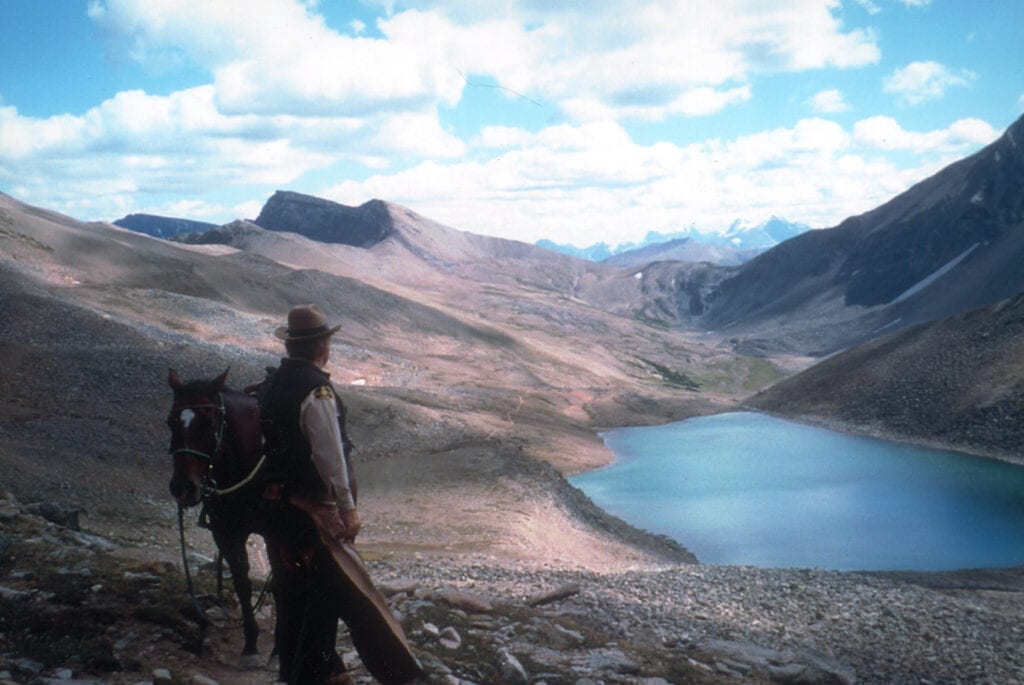
Rod Wallace on the Notch, 2001. Photo courtesy of Don Mickle.
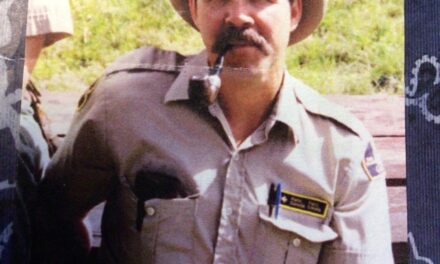
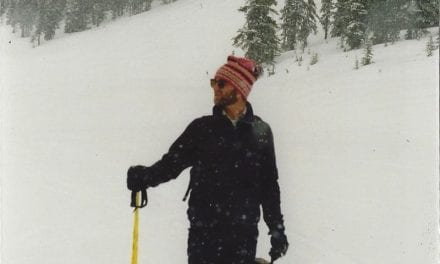
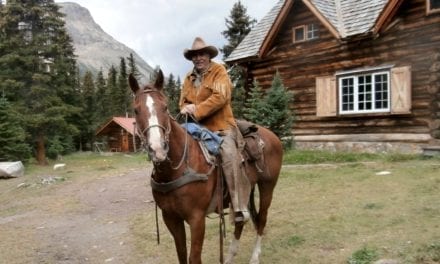
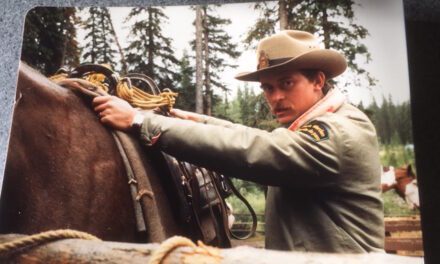
Hi Rude
Thanks for giving us a thorough synopsis of your interesting run with parks. You certainly jogged a few memories for me. I remember now of encountering you at both Rev/ glacier and Waterton in your early years. I also didn’t realize or remember that Partner became your partner. He was with a group of us on spring cleanup trip around the south in 1978 and was central in a dicey event at Isaac that should be submitted in the “Journal” section of this website.
Hi Rod.
Was nice to see Vance again. I spent 4 days with him in the Fiddle. A little unsteady on his feet but well trained. Thanks.
A friend from Waterton
Vance would tend to stumble on occasion, but only if the rider let him do so. He needed to be ridden with a gentle, but firm hand to ensure he was paying attention to the job at hand. I was fortunate to be given the horse as a four year old & worked with him while stationed at Pocahontas. He was ridden on patrol in the campground many times, as well as in the Fiddle for many years on ten day backcountry patrols. Frequent day trips were also made in all areas of the of the district & with F & W officers adjacent the Park. One of the truly great & versatile working horses of the Warden Service. RIP ol’ buddy.